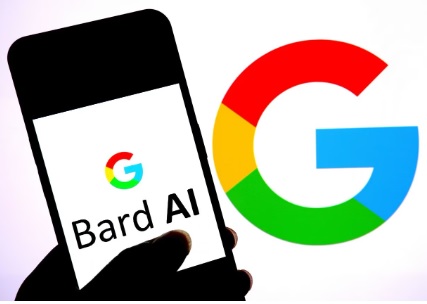Google Bard is a large language model (LLM) chatbot that can generate text, translate languages, write different kinds of creative content, and answer your questions in an informative way. It is still under development, but it has already learned to perform many kinds of tasks, and it is constantly learning new things.
Bard is powered by a research large language model (LLM), specifically a lightweight and optimized version of LaMDA. It is grounded in Google’s understanding of quality information.
What can Bard do?
Bard can do a wide variety of things, including:
- Generate text, such as blog posts, articles, poems, code, scripts, musical pieces, email, letters, etc.
- Translate languages
- Answer your questions in a comprehensive and informative way, even if they are open ended, challenging, or strange
- Help you with your creative writing projects
- Learn about new topics
- Translate documents
- Write emails and letters
- Generate code
- And much more!
How to use Bard
To get started with Bard, simply visit the Google AI website and sign up for a free account. Once you have created an account, you can start using Bard by giving it prompts. For example, you could prompt Bard to write a blog post about a certain topic, or you could prompt Bard to translate a document into another language.
Bard will generate a response based on your prompt. You can then refine your prompt and ask Bard to generate a new response. You can continue this process until you are satisfied with the response.
Examples of how to use Bard
- Write a blog post about a certain topic: If you are having trouble coming up with ideas for blog posts, you can prompt Bard to write a blog post about a certain topic. For example, you could prompt Bard to write a blog post about “the top 10 benefits of using AI in marketing.”
- Translate a document into another language: If you need to translate a document into another language, you can prompt Bard to translate the document for you. For example, you could prompt Bard to translate a document from English to Spanish.
- Help you with your creative writing projects: If you are working on a creative writing project, you can prompt Bard to help you with your project. For example, you could prompt Bard to generate a character description for your novel, or you could prompt Bard to generate a poem about a certain topic.
- Learn about new topics: If you are interested in learning about a new topic, you can prompt Bard to answer your questions about the topic. For example, you could prompt Bard to answer your questions about the latest advances in AI, or you could prompt Bard to answer your questions about the history of the universe.
- Generate code: If you are a programmer, you can prompt Bard to generate code for you. For example, you could prompt Bard to generate a function for a certain task, or you could prompt Bard to generate a script for a certain task.
Search engine optimization tips for your Bard blog post
Here are a few search engine optimization (SEO) tips for your Bard blog post:
- Choose a relevant keyword or phrase: When you are choosing a keyword or phrase for your blog post, make sure that it is relevant to your topic and that it is something that people are likely to search for. You can use a keyword research tool to find relevant keywords and phrases.
- Use the keyword or phrase throughout your blog post: Once you have chosen a keyword or phrase, use it throughout your blog post, including in the title, the introduction, the body of the post, and the conclusion. However, make sure that you use the keyword or phrase naturally and that you don’t overuse it.
- Write high-quality content: The most important thing for SEO is to write high-quality content that is informative and engaging. Bard can help you to write high-quality content by providing you with information and inspiration. However, it is important to remember that Bard is a tool, and it is up to you to create the final product.
- Promote your blog post: Once you have published your blog post, promote it on social media and other websites. You can also submit your blog post to directories and search engines.
Expanding Horizons
Google Bard is set to expand its reach to more regions, ensuring that its remarkable capabilities are accessible to a wider audience [1]. By transcending geographical boundaries, Bard will connect with users across the globe, empowering them to harness the power of AI in their lives and work. This expansion signifies Google’s commitment to democratizing technology and making AI more inclusive.
Visualizing the Future
In a significant development, Google Bard is introducing images to its repertoire, enhancing its ability to comprehend and interpret visual content [1]. By incorporating image recognition and processing capabilities, Bard will be able to analyze and understand images with unparalleled precision. This breakthrough feature opens up new avenues for applications in fields such as healthcare, e-commerce, and content moderation, among others.
Seamless Integration
With the upcoming updates, Google Bard is poised to seamlessly integrate with partner apps, further expanding its functionality and versatility [1]. By collaborating with other popular applications, Bard aims to enhance user experiences and provide a seamless AI-driven ecosystem. This integration will enable users to leverage Bard’s capabilities within their preferred apps, streamlining their workflows and unlocking new possibilities.
Optimizing the Bard Experience
Google Bard’s updates are designed to optimize the user experience, empowering individuals and organizations to leverage AI effortlessly. Whether you are a web design agency, freelancer, small business owner, or online store owner, Bard offers a suite of features tailored to meet your specific needs [2]. With no-code design, theme builder, ecommerce capabilities, and a vast library of elements and layouts, Bard empowers users to create stunning websites and digital experiences without any coding expertise.
Unleashing the Power of AI
The new Google Bard transcends traditional boundaries, offering a range of products and services designed to harness the full potential of AI [2]. Divi AI, powered by Bard, enables users to build websites with the aid of AI, simplifying the design process and saving valuable time and resources. Additionally, Divi Cloud provides cloud storage for Divi designers, facilitating seamless collaboration and effortless access to design assets.
In Conclusion
Conclusion: The forthcoming updates of Google Bard mark an exciting milestone in the evolution of AI technology. With its expansion to more regions, introduction of image recognition capabilities, and seamless integration with partner apps, Bard is poised to redefine how we interact with AI. As users embrace these updates, they will unlock new possibilities, streamline workflows, and tap into the immense power of AI. Embrace the new Google Bard and embark on a transformative journey into the world of AI-driven innovation.



